Ethics Training for Employees: Why It's Important & What It Looks Like
In terms of the work environment, a company is ethical if it has well-defined codes of personal and professional conduct. These codes ensure the company operates in a legal manner and they follow all the rules and regulations closely. They also ensure that the business is aware of employee comfort and safety. Now that you have a basic understanding of what ethics is and isn't, let’s take a closer look at ethics training for employees.

Before delving into the ins and outs of ethics training for employees, we need to understand what it means to be ethical.
What are ethics?
According to the Merriam-Webster dictionary, ethics are a set of moral principles or a system of moral values. Ethics are the principles of conduct governing an individual or group. Think of it as a moral consciousness or guiding philosophy.
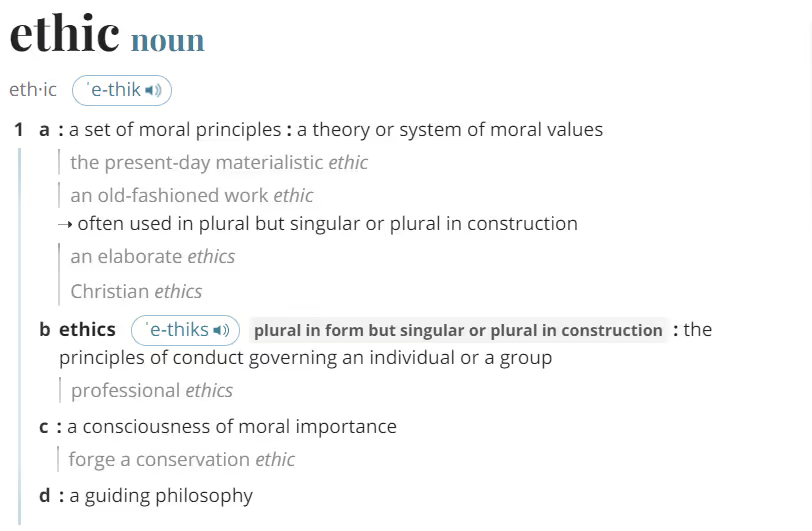
In other words, ethics is the discipline of dealing with what is good and bad with moral duty and obligation.
In terms of the work environment, a company is ethical if it has well-defined codes of personal and professional conduct. These codes ensure the company operates in a legal manner and they follow all the rules and regulations closely. They also ensure that the business is aware of employee comfort and safety.
Now that you have a basic understanding of what ethics is and isn't, let’s take a closer look at ethics training for employees.
Why train in the first place?
The whole reason we are talking about ethics training boils down to the Sarbanes-Oxley Act, also known as SOX.
Congress enacted SOX in 2002 to prevent a company from interfering with an independent financial audit. The federal government wanted to enhance the independence of audits by regulating internal procedures and actions of businesses’ management teams.
Section 302 requires public companies to adopt internal procedures to make sure that financial statements are accurate. It also makes CEOs and CFOs directly responsible for the accuracy, documentation, and submission of financial reports and internal control structures.
Congress also wanted to ensure the Act’s effectiveness. As a result, they provided robust enforcement and oversight provisions.
Section 301 imposes criminal liability on any C-suite executive, such as the CEO and CFO mentioned above, who knowingly or willfully submits non-complying financial statements.
Section 303 makes it unlawful for any executive officer or director to exercise improper influence over audits. This includes the use of coercion, manipulation, or fraud to falsify an aspect of the audit.

Section 404 requires management to establish adequate internal control structures and procedures for financial reporting. It also requires that management personnel submit an end-of-the-year assessment of the effectiveness of the internal control structure.
This verboseness and strictness associated with SOX is all thanks to the infamous company, ENRON. For years ENRON committed systematic accounting fraud to inflate its revenues and hide its debts. The scandal is one of the biggest examples of an unethical company to date.
What is ethics training?
Ethics training can look different from company to company. Things like the size of the business, the industry you work in, and your role in the company will affect the message communicated in an ethics training program.
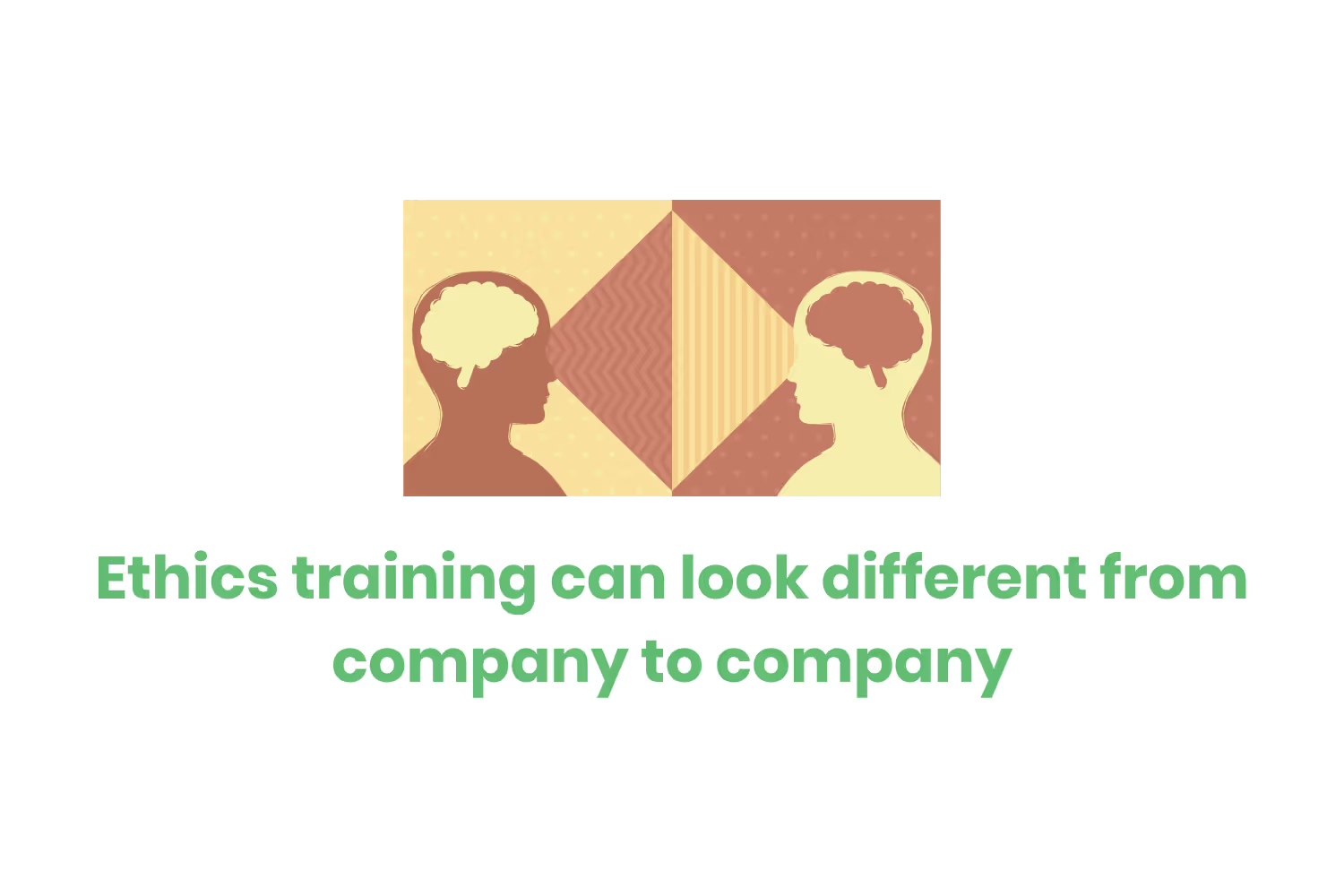
There are a few things that will stay consistent, no matter what your training looks like. Ethics training will involve some kind of program where you teach employees about practices where they work that would improve the workplace.
Some ethics training regimens for employees are better than others. Just like how you have good teachers and bad teachers in grade school, you have good and bad training programs.
Similarly, the difference between in-person training and virtual training can affect the effectiveness of the course.
In a nutshell, there is no “right way” or “one way” when it comes to ethics training. As long as it’s effective and fulfills its purpose, it doesn’t matter what it looks like.
But, just know that students retain 25% - 60% more via online courses.
The Purpose of Ethics Training
An ethical workplace is one that has well-established codes of both professional and personal conduct. These codes will comply with all regulations and laws that govern the business and industry.
Ethics training will instill a moral code of conduct in employees that include honesty, diversity, good citizenship, and compassion.
Both of these aspects serve two main purposes from a business perspective:
- Protecting the business’s bottom line
- Improving the work environment
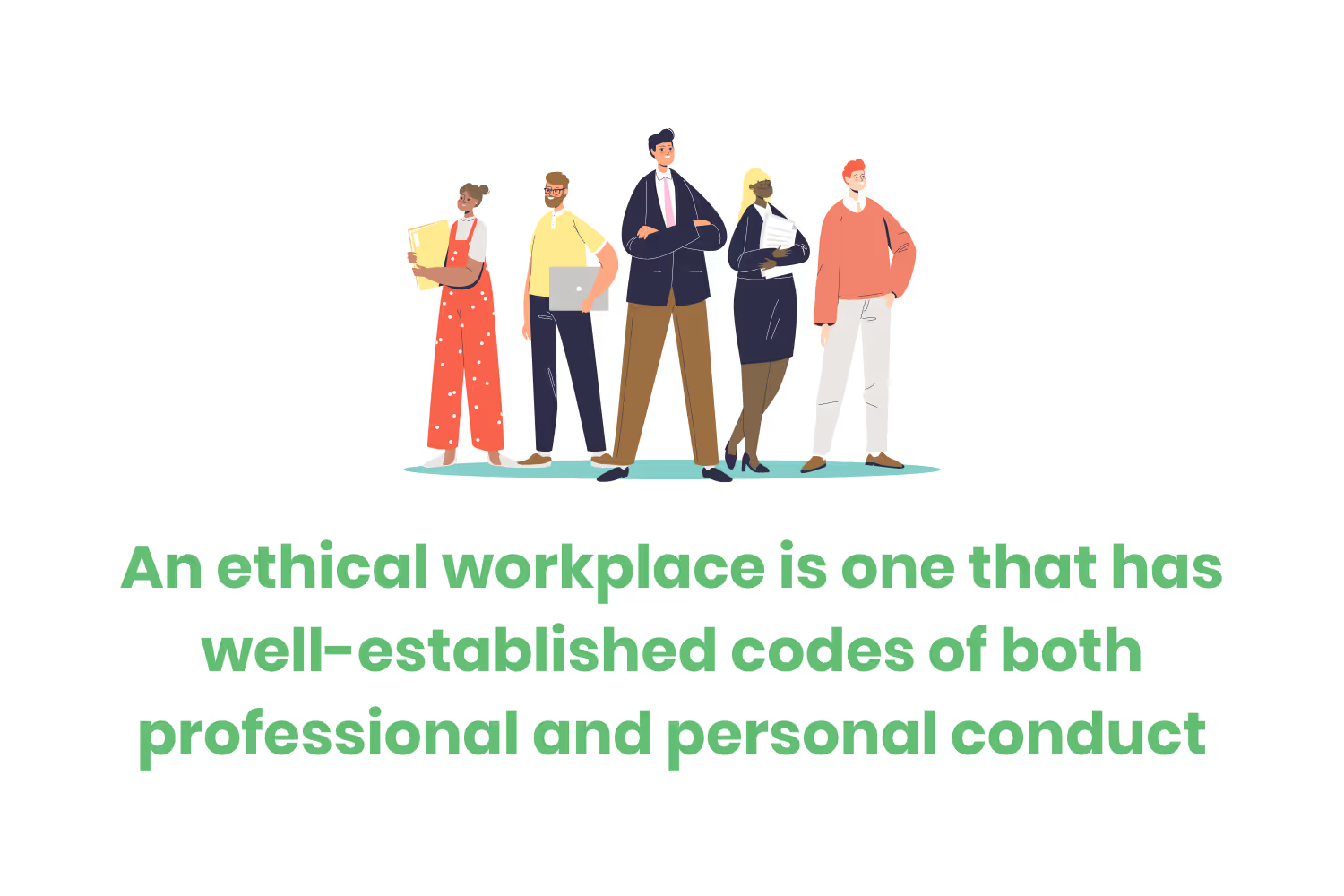
Protecting The Bottom Line
Unethical behavior negatively impacts the bottom line in more than one way. Going to court over unethical behavior is expensive. Firing the unethical employee, hiring a new employee, and training the new recruit is also expensive.
Let’s not forget fines!
A lack of ethics affects profits when a business faces multi-million dollar fines. To prove this point, over 50% of the largest corporate bankruptcy cases happened because of unethical practices.
For publicly traded companies, unethical behavior lowers stock prices. Customers will take their business elsewhere because they don’t want any association with the unethical company. It's also hard to get new customers because the industry doesn’t trust you anymore.

Where there are ethical problems, scandals soon follow.
Ethics training programs prevent someone from ruining the work environment because of unnecessary scandals and workplace harassment. If everyone has the training, then no one will tolerate questionable behavior.
A Great Place to Work
Ethical employees create a great working environment for their coworkers. A positive work environment innovates, collaborates, motivates, and grows together.
Problems like retaliation, bribery, physical violence, and other unethical behaviors are no longer of concern.
Similarly, employees trained in ethics are more focused on their responsibilities and are fair with their coworkers and clients. Therefore, ethics training for employees secures organizational productivity and wealth.

Teamwork is also positively influenced by ethics training. It helps build trust among employees which then translates to better teamwork. As a company’s employees work together as a team, it increases efforts to make the organization successful.
Developing an Ethics Training Program
When developing an ethics training program for employees, here are some guidelines and advice that you can follow to ease the process.
Stand for Something
Developing an ethics training program for employees means you first need to develop a “code of conduct”. This will help translate the values of the organization into standards that guide behavior.
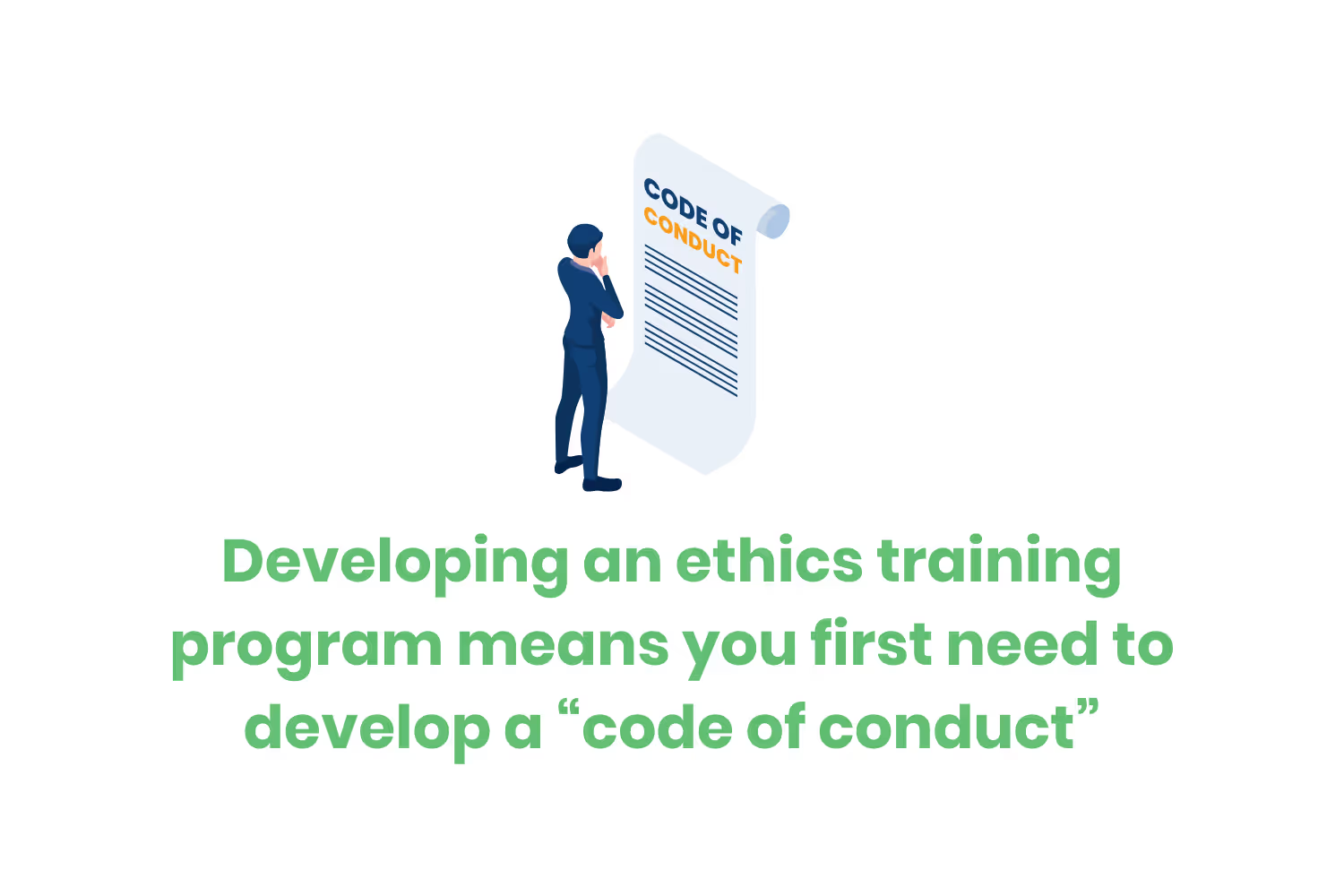
When it comes to compliance with different laws, such as HIPAA, OSHA, or the SEC, the federal government already provides an outline for a code of conduct.
When developing a list of things you stand for, and then translating that list into how people interact with each other, you should address concerns like…
- Treating customers, coworkers, and the public with respect
- You can decide whether this applies during office hours or when out of the office too.
- Appropriate use and protection of personal or confidential information.
- Giving gifts to or receiving gifts from customers, suppliers, etc.
- Employment practices
- Avoiding conflicts of interests
- How to use company assets appropriately
- Compliance with applicable laws
- HIPAA is a good example of this.
- Compliance with industry regulation requirements.
- OSHA is a good example of this.
Identify the Different Types of Ethical Topics to Include
Once you have in writing what the organization stands for and how that translates into employee behavior, you need to identify the topics of the training. After all, even with a code of conduct in place, it isn’t always easy to know what to do in the heat of the moment.

This is why it's so important to provide ethics training for employees at all levels within the company. You need to help them learn how to assess a situation and proceed with integrity.
Some of the topics you may wish to cover include…
- The organization’s code of conduct and values
- Company culture
- Ethical conduct in the office
- Ethical conduct outside the office
- Common ethical dilemmas
- Ethical customer relations practices
- Diversity training
- Data privacy and protection
- Regulatory and compliance requirements
- Ethical employment practices
It’s important to mention that ethics training is not a “one-and-done” topic. Ethics doesn’t have a “one right answer” to a single concrete issue.

The reason you need to have so many different training programs within the ethics course is to teach employees how to make consistently good decisions. The more training an employee receives, the more you reinforce how there are a variety of solutions to a problem.
Train Employees Where They Are
Employees don’t need a monthly lecture on how to be good citizens. You hired them after all, so they must be a decent person at the very least. There’s a high chance that your employees already have a strong ethical and moral code.
I say this because you need to train your staff the way they need it.
Sometimes a round-table discussion about ethical behavior is effective. Role-playing tricky situations is also a good idea. Just don’t forget that sometimes employees just need a quick reminder on a regulation update. A quick debrief on changes to compliance regulations may be most effective.
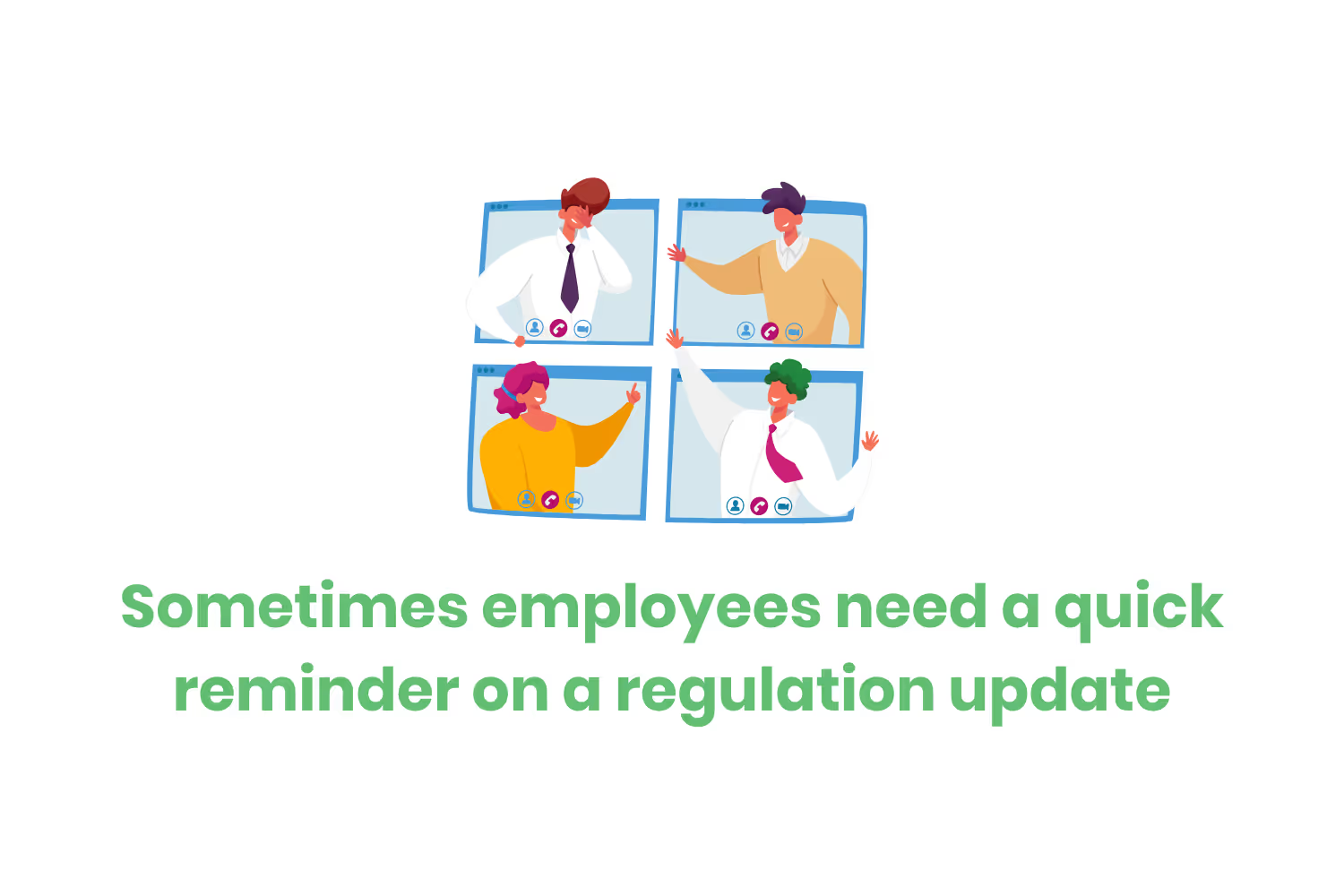
Consider adding microlearning options to deliver the most effective training possible. Mix up the training with e-learning modules and in-person discussions. Adding variety to your training program is key to training your employees.
Get Leadership Involved
If the higher-ups in the company aren’t 100% behind the ethics training for employees, this is a problem. Your leadership could send a message that ethics isn’t important and the training is a waste of time.
Not good.
Ethical leaders have a commitment to working with ethical employees.
By getting leadership involved with the training process, you will decrease the chance of an unethical situation arising in the future.
Consider Incentives
A 2018 study published in the Journal of Personality and Social Psychology suggests that incentives are effective.
People who receive immediate, frequent rewards for completing small tasks report more interest and enjoyment in their work. People who received delayed rewards only given out at the end of a project had noticeably less enjoyment.

The study found that those same people remained interested and engaged in their tasks even after removing the reward. This suggests that frequent small rewards have a lasting positive impact on performance and job satisfaction.
Consider offering your employees gift cards, free lunches, snacks, and other small bonuses or perks for employees who go above and beyond. These rewards will motivate them to put their training into practice.
Create Common Goals and Identity
Creating common goals can help with defining company culture and getting leadership involved. Developing common goals will help create a unified company identity and vision.

When creating these goals, you need to be very clear about who you are as a company and what it stands for. These should translate into your mission statement.
Why the mission statement? It’s the driving force behind everything you do. It affects every decision you make.
Make It Fun
Employee training can be long and boring. Let's be honest, you have heard staff moan and groan about having to take training.
When employees aren’t engaged, you’ll get pushback.
Ethics is a serious topic. But you can still make learning about ethics fun and interesting. Methods like gamification and role-playing can help lighten the mood. At the very least, it gets employees to think in a different way, making them more engaged in their training.
Conclusion
I’ve alluded to this point all throughout this blog post, but ethics is a serious topic.
No matter how you decide to present the training material, you need to keep the goal of ethics training in mind.
You train your employees in ethics so that they represent your company in the best light. You want your staff to function as a team where everyone feels appreciated, supported, and heard.
When designing ethics training for employees, you always want to communicate that it's always ok to do the right thing. There should never be any negative consequences for illuminating ethical issues. There shouldn’t be any retaliation for questioning business practices that could cause harm.
When you communicate the message to do the right thing, and it's truly felt throughout the organization, choosing what’s right over what's convenient or profitable becomes the norm.
Therefore, no matter how fun the training might be, you need to take the training seriously. Give it the time, space, and resources you need to do it well.
Emphasize your product's unique features or benefits to differentiate it from competitors
In nec dictum adipiscing pharetra enim etiam scelerisque dolor purus ipsum egestas cursus vulputate arcu egestas ut eu sed mollis consectetur mattis pharetra curabitur et maecenas in mattis fames consectetur ipsum quis risus mauris aliquam ornare nisl purus at ipsum nulla accumsan consectetur vestibulum suspendisse aliquam condimentum scelerisque lacinia pellentesque vestibulum condimentum turpis ligula pharetra dictum sapien facilisis sapien at sagittis et cursus congue.
- Pharetra curabitur et maecenas in mattis fames consectetur ipsum quis risus.
- Justo urna nisi auctor consequat consectetur dolor lectus blandit.
- Eget egestas volutpat lacinia vestibulum vitae mattis hendrerit.
- Ornare elit odio tellus orci bibendum dictum id sem congue enim amet diam.
Incorporate statistics or specific numbers to highlight the effectiveness or popularity of your offering
Convallis pellentesque ullamcorper sapien sed tristique fermentum proin amet quam tincidunt feugiat vitae neque quisque odio ut pellentesque ac mauris eget lectus. Pretium arcu turpis lacus sapien sit at eu sapien duis magna nunc nibh nam non ut nibh ultrices ultrices elementum egestas enim nisl sed cursus pellentesque sit dignissim enim euismod sit et convallis sed pelis viverra quam at nisl sit pharetra enim nisl nec vestibulum posuere in volutpat sed blandit neque risus.

Use time-sensitive language to encourage immediate action, such as "Limited Time Offer
Feugiat vitae neque quisque odio ut pellentesque ac mauris eget lectus. Pretium arcu turpis lacus sapien sit at eu sapien duis magna nunc nibh nam non ut nibh ultrices ultrices elementum egestas enim nisl sed cursus pellentesque sit dignissim enim euismod sit et convallis sed pelis viverra quam at nisl sit pharetra enim nisl nec vestibulum posuere in volutpat sed blandit neque risus.
- Pharetra curabitur et maecenas in mattis fames consectetur ipsum quis risus.
- Justo urna nisi auctor consequat consectetur dolor lectus blandit.
- Eget egestas volutpat lacinia vestibulum vitae mattis hendrerit.
- Ornare elit odio tellus orci bibendum dictum id sem congue enim amet diam.
Address customer pain points directly by showing how your product solves their problems
Feugiat vitae neque quisque odio ut pellentesque ac mauris eget lectus. Pretium arcu turpis lacus sapien sit at eu sapien duis magna nunc nibh nam non ut nibh ultrices ultrices elementum egestas enim nisl sed cursus pellentesque sit dignissim enim euismod sit et convallis sed pelis viverra quam at nisl sit pharetra enim nisl nec vestibulum posuere in volutpat sed blandit neque risus.
Vel etiam vel amet aenean eget in habitasse nunc duis tellus sem turpis risus aliquam ac volutpat tellus eu faucibus ullamcorper.
Tailor titles to your ideal customer segment using phrases like "Designed for Busy Professionals
Sed pretium id nibh id sit felis vitae volutpat volutpat adipiscing at sodales neque lectus mi phasellus commodo at elit suspendisse ornare faucibus lectus purus viverra in nec aliquet commodo et sed sed nisi tempor mi pellentesque arcu viverra pretium duis enim vulputate dignissim etiam ultrices vitae neque urna proin nibh diam turpis augue lacus.




